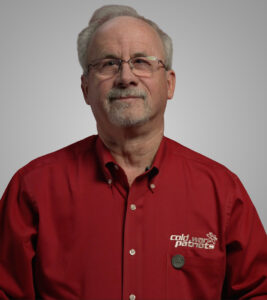
CWP Blog | CWP
Is EEOICPA Really for Me?
June 26, 2024
June 26, 2024
CWP
CWP Blog

By Tim Lerew, Cold War Patriots Strategic Advocacy, Emeritus
If you are reading this article, the answer is likely, “YES.” But let’s answer that question with a few real-world examples that will help you understand if the significant, free compensation and health benefits of this special law apply to you.
Before getting to questions and examples, let’s take that long acronym, EEOICPA, apart to better understand its meaning. The Energy Employees Occupational Illness Compensation Program Act (EEOICPA) is a Federal law, passed by U.S. Congress and signed by the President in 2001, that provides financial compensation and comprehensive health benefits to the more than one million Americans who worked in our nation’s nuclear weapons complex of hundreds of different work facilities and uranium sites throughout the United States, provided that they have a work-related illness.
Are you a current or former nuclear weapons or uranium worker?
Did you ever, even for a little as one day in some circumstances, work in America’s nuclear weapons complex? For purposes of EEOICPA, the nuclear weapons complex refers to more than 350 plants, research and development facilities, plus processing, assembly and disassembly locations and other related sites operated by many different vendors, all managing the U.S. Department of Energy’s nuclear weapons research, development, assembly, testing and maintenance—at any time. This also includes uranium workers who worked in the industry up to 1971.
Let’s repeat that: EEOICPA can provide benefits now for anyone with qualifying employment and one or more work-related illnesses. People like you who worked at any time in the nuclear weapons complex, from the early days of the Manhattan Project during WWII all the way up to the present day, might qualify for EEOICPA. While the length of employment can often contribute to the likelihood of benefits being granted, it is by no means the only factor.
Examples of qualified worker stories*
Chemical Cleaners Lead John to EEOICPA Qualification*
John worked for 12 years, from 1992 to 2001, in plant maintenance at the Y-12 National Security Complex in Oak Ridge, Tennessee. He’s now 68 years old, retired, receiving Social Security and pays for Medicare. He’s cancer-free but over recent years has experienced shortness of breath, especially after walking long distances or using stairs. His doctor diagnosed him with COPD. John’s janitorial and maintenance work at Y-12 frequently included the use of acetone and other toxic chemicals and cleaning solvents. He made a claim for benefits for his COPD, and his work history helped document his toxic exposures. His claim for benefits was approved under Part E of EEOICPA. He’s received over $80,000 so far in tax-free Impairment benefits, and all his COPD medical expenses, including his lung doctor visits, medications and inhalers, are covered and paid for 100% by the United States Department of Labor, which administers EEOICPA. John is aware that should his COPD worsen, he can with his doctor’s orders under EEOICPA receive some level of free in-home assistance, giving him peace of mind to remain comfortably in his own place and avoid nursing homes.
Years After Atomic Career, Maria’s Breast Cancer Still Qualified*
Maria is 76 years old and has lived her entire life in Espanola, New Mexico. For 28 years, from 1970 until 1998, she carpooled with coworkers and made a 40-mile round-trip drive to the Los Alamos National Laboratory. There she worked as a lab assistant, working with plutonium fabrication, testing and purification equipment while taking advantage of all lab safety and health protective clothing and equipment. While working at the lab, Maria never suffered from any serious health problems. In 2008, ten years after leaving the lab, Maria was diagnosed with breast cancer. Her number one priority was getting appropriate treatment, which she did. Her treatment included surgery and subsequent chemotherapy, which was successful. She continues to be cancer-free. Maria’s sister, who never worked at the lab, also had breast cancer later in life. It was not until March of 2020, when Maria was locked down by the pandemic for weeks in her Espanola home, that she noticed information in her mail from Cold War Patriots that made her curious if her own breast cancer case might qualify her, even though it had been so many years ago, for EEOICPA benefits.
Maria learned that indeed, through something called a Special Exposure Cohort (SEC), her breast cancer was among those eligible for compensation and health benefits, even though she was diagnosed several years after leaving her lab job. In the case of the Los Alamos National Laboratory, their SEC is for most employees that worked at least for one year between 1943 and 1975. Since Maria was still an employee at the lab for a few years before the cohort ended in 1975, her breast cancer was indeed eligible for compensation, without any need for her to prove her cancer was work-related— if she took the step of making a claim.
In her case, her EEOICPA application took about four months to process and eventually be approved. She received an initial $150,000 from Part B of EEOICPA, the part that deals with cancers, Beryllium disease and Silicosis. In addition, she used PCM Impairments to assist her with her free Impairment evaluation under Part E of the program. So far, she’s received an additional $12,500 under this part of the program. Should her breast cancer recur in the future, her EEOICPA benefits will pay 100% of all charges associated with treatment of her illness.
Electrician Michael Qualified After Two Years at Nevada Test Site*
Michael is a 60-year-old journeyman master union electrician living in southern Nevada. If you’ve ever visited Las Vegas, it’s likely you stayed at one of the large hotels where Michael and his fellow electricians work to keep the lights on, and the air conditioning powered up. But in 1984, Michael was just an apprentice electrician, sent as a “cable puller” and electrician’s helper 70 miles north of Las Vegas to what was then called the Nevada Test Site (NTS). At NTS, 928 atomic weapons were detonated and tested to ensure their performance and relative safety. But of those tests, 828 were conducted underground, making tunnels in Nevada’s silica-heavy rock and sand a requirement. Michael worked pulling electrical cables and a maze of testing wires for a total of two years at the test site and didn’t think he was exposed to dangerous amounts of radiation. Still, after he left his work at the test site, he noticed a frequent runny nose and an occasional “smoker’s cough,” even though he never smoked cigarettes.
But under the terms of the EEOICPA, Silicosis, a lung disease caused by exposure to silica –tiny glass like fibers—is a primary covered illness. Michael’s length of exposure and medical diagnosis of Silicosis, more than 30 years after his original exposure, qualified him for EEOICPA Part B benefits. In Michael’s case, that amounted to $150,000 tax-free compensation and free medical coverage for any future treatment of the illness. Michael’s doctor follows his case closely, and should potentially expensive therapies, oxygen or home care services be needed in the future, 100% of the costs will likely be paid for under EEOICPA.
Breathing Issues Linked to Beryllium Exposure Qualified Howard for Ongoing Care*
Howard worked for most of his career as a machinist in northern Ohio at what was then called Brush-Wellman, now Materion, an Atomic Weapons Employer (AWE) whose employees can be eligible for some EEOICPA benefits under Part B of the program. What is special about his employer is its integrated mining, production, and fabrication of Beryllium—an essential metal used in the assembly of nuclear weapons. Although not radioactive itself, people exposed to Beryllium dust, fumes or vapors can develop an allergic reaction to the material that collects in their lungs—and results in an often long and life-threatening illness called Chronic Beryllium Disease, or CBD.
Howard was exposed to Beryllium over the course of his career. His company was aware of EEOICPA and assisted him with his application and approval of benefits. His case was serious, with not only the breathing issues and need for supplemental oxygen 24/7, but also many secondary or follow-on illnesses related to Howard’s primary case of CBD that would eventually be covered for medical services under EEOICPA. Indeed, after his wife passed away, the only way Howard was able to avoid moving to a nursing home was to have what would eventually be 24/7 assistance from the caregivers at Professional Case Management to remain safely in his home. One hundred percent of the costs of his CBD-related care, including expensive medications, oxygen and even his in-home care, was covered completely by the EEOICPA program, for more than seven years, with no co-pays, no caps and no deductibles. Exposure to Beryllium for some can have such harmful allergic effects that the EEOICPA only requires covered employment of one day to potentially qualify for compensation and health benefits.
Find out if you qualify for EEOICPA
So, where does this leave you, the average nuclear weapons complex worker?
No single type of job rules you in or out of potential benefits. It took the coordinated work of hundreds of different job functions, from chemical operators to carpenters to research chemists to day laborers to scientists to create and maintain America’s nuclear arsenal. If you earned a paycheck and worked “inside the fence” at one or more of the more than 350 past or present facilities and plants that have contributed to America’s nuclear weapons program, you are likely eligible. A comprehensive list of covered facilities is maintained by the U.S. Department of Energy and can be found online here: https://ehss.energy.gov/Search/Facility/findfacility.aspx
Two things are essential for benefits:
- Covered employment as part of the nuclear weapons complex. The stories shared feature some applicable sites and the link above lists many more. Cold War Patriots maintains an Outreach Help Center with representatives that also worked at U.S. Department of Energy-covered facilities—they are just a free phone call away at 855-230-1339.
- A work-related illness, or illnesses, must be present for a claim to be filed. If you are 100% healthy, that’s wonderful. But if you suspect that one or more of your health conditions might have been related to your national security employment, then look deeper, consider a claim and feel free to ask for help from knowledgeable resources like Cold War Patriots. Benefits are not “automatically” approved; each worker or their authorized representative must make a claim to receive benefits. And those claims do not expire. Eligibility dates back to the mid-1940s and World War II’s Manhattan Project. And exposures in America’s nuclear weapons complex, even today, still result in covered illnesses and significant financial compensation and health benefits being awarded.
So, is EEOICPA really for you? The answer is likely yes. It was designed to provide compensation and care for work-related illnesses you suffered resulting from your vital work providing for America’s national security.
*Workers’ names have been changed to protect their privacy.
